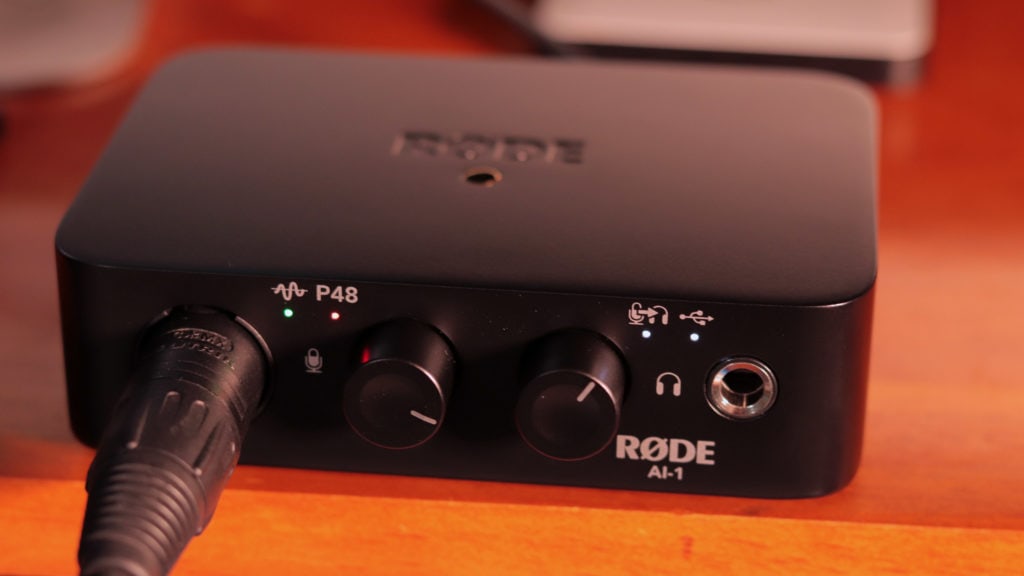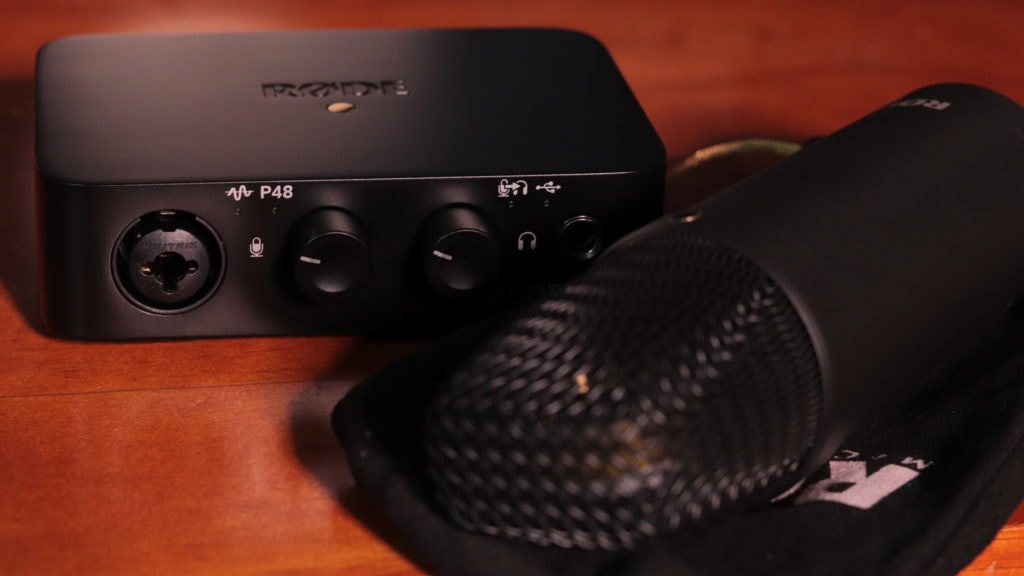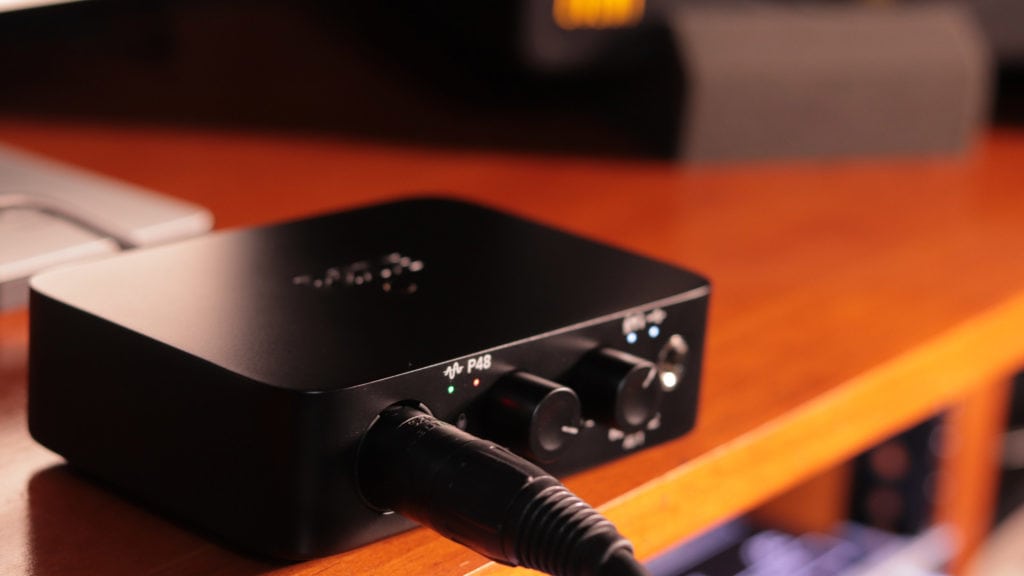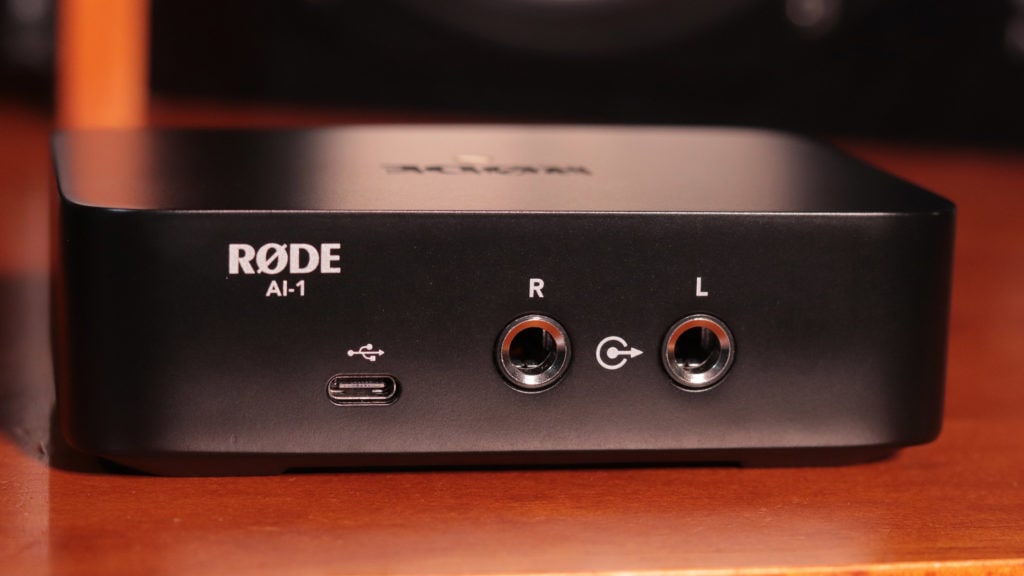Rode introduces it’s first-ever audio interface with the incredibly affordable, studio quality AI-1

MSRP: $129 USD
rode.com/ai1
-Excellent preamp
-Direct monitoring for low latency
-Solid build quality
-Studio quality headphone / balanced outputs
-Incredibly affordable
-Limited I/O
I receive messages often asking what affordable audio interface I would recommend. Admittedly, I hadn’t found anything on the market that I felt comfortable recommending until now. When I first heard the announcement that Rode would be entering the audio interface market, I was extremely curious to see and hear the AI-1 in action. Then, I saw the price and let’s just say I was skeptical…
The Rode AI-1 is a simple and easy to setup audio interface with 1 Neutrik XLR and 1/4″ combo input, 48V phantom power, discrete headphone output and balanced line level outputs. The interface comes equipped with a USB-C connection, although it ships with an adapter for use with older USB connections also. Setup on Mac was completely plug-and-play, no drivers to install and it showed up in the OS / DAW settings immediately.
After using the AI-1 extensively over the past few weeks in my studio, I’ve been impressed with the amount of quality Rode has packed into this unit for the price. My biggest concern was the mic preamp (even recording it in a shootout with a much more expensive interface) and it has performed admirably. It’s clean, quiet and sounds fantastic tested with the NT-1 microphone and an electric guitar. In a market that seems to cut costs first in this area, it was a pleasant surprise to hear the AI-1 preamp perform so well.
One of the best things about the Rode AI-1 is it’s simplicity and execution. There are only 2 controls on the front panel – 1 for adjusting the level of the mic / line input and the other for adjusting the level of your headphone and speaker outputs. If you press down on the input control, it will activate 48V phantom power for mics in need. Pressing on the right output control will activate direct monitoring. This provides latency-free, direct monitoring through the headphone jack and is an awesome feature for songwriters (especially rap artists focused on precise timing). Another notable feature is that the AI-1 will automatically turn off the speaker outputs when headphones are plugged into the front jack.
Build quality is exactly as you’ve come to expect from Rode. It’s a rock-solid metal build with rubber bottom to keep it from slipping off your desk during recording sessions. The audio conversion quality in my tests is excellent and after having the AI-1 hooked up in my studio for many days, I forgot I was using it in in place of a much more costly interface. The line level outputs to my studio monitors (Event 2030) have ample gain with no noise or noticeable coloration.
With just how impressive the AI-1 truly is, it got me wondering what would be possible if Rode made it BIGGER? I’m talking more inputs and outputs, midi implementation and expanded features for the pro studio. Don’t get me wrong, this is the best interface I’ve seen in this price range and it’s compact size makes it perfect for mobile recording. Still, I can’t help but wonder if Rode will take what works so well with the AI-1 and expands it into a larger, more robust interface. Only time will tell…
I’m relieved to say I’ve finally found an affordable audio interface that delivers quality, even to the most discerning ears. I know the frustrations caused by many other audio interfaces in this price class first-hand and I won’t hesitate to use the AI-1 on my own projects. If you’re in the market for a budget-friendly, easy to use, rock solid audio interface from a brand you can trust, skip the others and go with the AI-1.
Purchase on Amazon
Rode AI-1: http://amzn.to/2DyWd5b
Rode AI-1 + NT-1 Studio Pack: http://amzn.to/2neYrA6




Hey man, great job with the review and with the shoot out. Wow I can believe what I just heard!! Sounds amazing!! And you can’t beat that price!!
thanks man 🙂 have been very impressed with the AI-1!
I bought the interface and my speakers sound really weak on the rode ai 1. On my rme ufx the speakers sound stronger. Any suggestions?
Nice review bro. Is there anyway i can increase my i/o.
Hi. I was wondering if there was any audio latency into the PC? You mentioned latency-free direct monitoring through the headsets, but I am curious about into the PC. Is there a delay?
Hi Steph, if you use the onboard DI monitoring, there is no latency. As far as monitoring in your DAW, that depends on your system but I’ve used low buffer settings (128 – 256 samples) without a noticeable delay.
Hey should i go with this or with a Audient iD4 has anyone experience with both ?
there is one BIG flaw with the interface – everything is nice, but the line out is -6dbu!!
first I thought mine was not proper working and sent it back. but everything was alright with it! I suddenly learned, that max of -6dbu isn’t enough to hear anything out of your normal hifi amp – it’s 1/3 of the level of an CD player! so you need to crank everything to get to room level!
that’s super weak!!!
Owners of the AI-1, can you tell us precisely how good (how tight) is its hardware driver’s latency in your DAWs (i.e. Logic, Live, Cubase, etc.) ?
1. To get those values, just open the Audio Settings in your DAW, and in the Drop-Down or Slider, set it to 128 Samples, 256 Samples etc. and it’ll tell you how much latency in milliseconds (ms) it gets.
PS: Needless to say, before doing so, don’t forget to select your actual Audio Interface’s Asio Drivers in the very top drop-down menu in the same “Audio Settings” tab.
2. Then fill in the “?” blanks in the following chart:
I’m particularly interested in 24bit / 48Khz (nowdays standard quality) for :
128 Samples = ? ms (software or crappy ASIO driver : usually not available)
256 Samples = ? ms (software or crappy ASIO driver: usually 5-6ms / which means 15-20ms in reality)
512 Samples = ? ms (software or crappy ASIO driver: usually 10-11ms / which means 25-30ms in reality)
RODE ASIO driver on Reaper – 24bit 48000hz:
64 samples = ~1,3/5,3ms
128 samples = 2,6/5,3ms
256 samples = 5,3/5,3ms
512 samples = 10/10ms
Is it possible to connect dedicated mic preamp (like dbx286) 1/4 inch line output directly into AI-1 input port? Is it going to distort sound or something?
That doesn’t seem good that you cannot use line out while headphones are connected. Do does that mean you can’t send the audio to a separate recording device if headphones are connected?